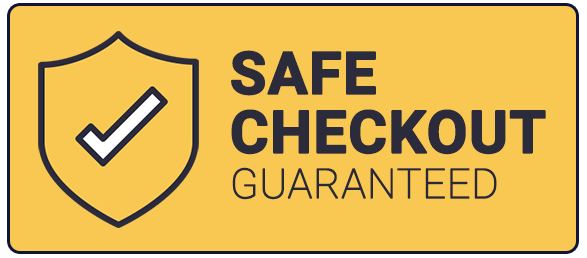|
As our American Heart Association (AHA) First Aid training teaches, there are two types of bleeding: controllable and uncontrollable. A Stop the Bleeding training was an initiative implemented by the White House in 2015 to teach life-saving techniques used by the military and emergency personnel in providing instruction to the public. The Stop the Bleeding kits contain dressings and a tourniquet to be used on someone with uncontrollable bleeding. There are various steps involved in the Stop the Bleeding training but the basic steps include calling 911, determining where the bleeding is coming from and then applying direct pressure or a tourniquet. Unfortunately, anyone who experiences uncontrolled bleeding is at risk for dying if the problem is not addressed immediately with 35% of pre-hospital deaths originating from uncontrollable bleeding according to the Stop the Bleeding Coalition.
Again, the ABC's of uncontrollable bleeding are the following: A – Alert – call 911 B – Bleeding – find the bleeding injury C – Compress – apply pressure to stop the bleeding by: Covering the wound with a clean cloth and applying pressure by pushing directly on it with both hands, or using a tourniquet, or packing (filling) the wound with gauze or a clean cloth and then applying pressure with both hands. http://www.heraldbulletin.com/news/local_news/public-can-learn-how-to-prepare-for-worst-case-scenario/article_e75f3578-e657-57ad-9d1e-4fea79a8b540.html
Comments
Awareness is a focal point of initiating CPR in a timely manner.
Imagine that you are in a parking lot and someone collapses from cardiac arrest. With the help of the PulsePoint application, assistance may be closer than you realized. The PulsePoint application allows individuals who are trained in CPR and willing to help in an emergency to register with the application. In the event that an emergency occurs and CPR is needed, the PulsePoint application will generate a distinctive tone to users and first responders in the immediate area. A map will also appear allowing the first responder to know the exact location. The map will also indicate the exact location of an automated external defibrillator that is close to the incident. Unfortunately, it is estimate that approximately 325,00 lives are lost each year due to sudden cardiac arrest and the survival rate for victims is less than 8 percent. In addition, permanent brain damage occurs after the brain is without oxygen for 8 minutes. After 10 minutes, the opportunity for a successful resuscitation usually drops significantly. Using resources made available such as PulsePoint may allow first responders and off-duty professionals such as firefighters, police officers, and nurses to also work collaboratively to update and report AED locations as needed. https://www.thepress.net/news/pulsepoint-respond-app-connects-neighbors-saves-lives/article_9b52b51c-1d7a-11e8-850b-171cc65bab50.html |
AuthorDr. Tracy A. Jones is the CEO of Help-A-Heart CPR, LLC and an American Heart Association, ASHI, and American Red Cross Master Program Trainer, Instructor, & AHA Faculty Member located in San Antonio, Texas. Archives
June 2024
Categories |
Help-A-Heart CPR, LLC | 1747 Citadell Plaza Suite 101 | San Antonio, Texas 78209 | (210) 380-5344 | [email protected]
Copyright © Help-A-Heart CPR, LLC 2024
100% Certification Acceptance
We promise your employer, school, or agency will accept the certification card we issue to you. If there is a question of acceptance or validity, simply send us an email at [email protected] with full details. We will reach out to the individual/entity and provide accreditation information. If still there’s a question, we will provide you with a full refund of your class fee. It’s that simple.
We promise your employer, school, or agency will accept the certification card we issue to you. If there is a question of acceptance or validity, simply send us an email at [email protected] with full details. We will reach out to the individual/entity and provide accreditation information. If still there’s a question, we will provide you with a full refund of your class fee. It’s that simple.
|
Communities Served
ALABAMA: Birmingham
ARKANSAS: Fayetteville, Hot Springs, Jonesboro, Little Rock NEW MEXICO: Albuquerque TENNESSEE: Knoxville TEXAS: Amarillo, Arlington, Austin, Bandera, Bastrop, Boerne, Brownsville, Comfort, Converse, Corpus Christi, Dallas/Ft. Worth, Del Rio, Dripping Springs, El Paso, Floresville, Fredericksburg, Georgetown, Harlingen, Houston, Junction, Katy, Kerrville, Kingsville, Kingwood, Laredo, Lubbock, Lufkin, McAllen, Midland, New Braunfels, Odessa, Pleasanton, Round Rock, San Angelo, San Marcos, Schertz, Seguin, Taylor, Temple, Texarkana, Tyler, Universal City, Victoria, Waco, The Woodlands |
Why Choose Help-A-Heart CPR?
1. Flexible Scheduling
2. On and Off Location Training Available 3. Casual, Fun Atmosphere 4. Best Price Guarantee 5. All Instructors are AHA and/or ARC certified 6. 5 Star Google Reviews 7. Blended Learning (Online & Skills Check) Available 8. Meets OSHA & College CPR Requirements 9. Get Certified Within 3-4 Hours 10.Certification Is Good For Two Years 11. Official AHA/ARC/ASHI Training Site 12. High Quality Safety Training! |








